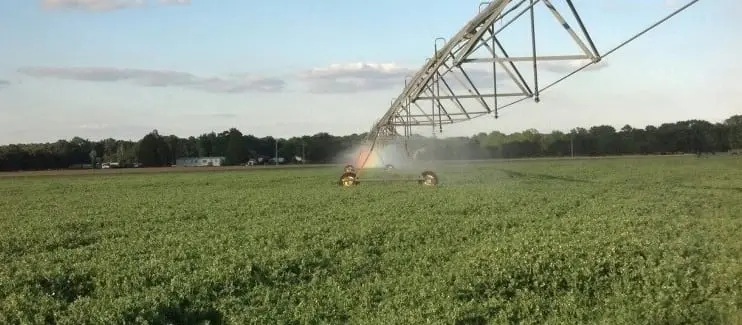Wilkins Farm, Greenwood, Delaware
As he harvests his crops on his farm in the Mid Atlantic portion of the United States, Richard Wilkins has a lot to worry about – including machinery and weather, just to name a few. But one thing he knows he can count on is that his soybeans will be able to get from his farm to the customers abroad who buy them.
“We have such an extensive transportation system here in the United States,” says Wilkins. “Right now, our competitors can’t keep up with us when it comes to our efficiency in moving our products.”
Wilkins has seen this firsthand. He recently spent some time in Brazil and got to experience that country’s transportation system for himself.
“There’s not the road and highway system like we have here to connect farms, which are often in the middle of the country, to the next step in the export process,” Wilkins adds.
 In the United States, there are approximately four million miles, or more than six million kilometers, of roads crisscrossing the country. Many first movements from the farm involve trucking the soybeans or other crops to an elevator or processor. If these roads aren’t reliable, the delivery of these crops can be delayed.
In the United States, there are approximately four million miles, or more than six million kilometers, of roads crisscrossing the country. Many first movements from the farm involve trucking the soybeans or other crops to an elevator or processor. If these roads aren’t reliable, the delivery of these crops can be delayed.
 “Another benefit we have here is our railroad system,” Wilkins notes. “Our competitors have some rail, but a lot of it is still in the planning stages. The railroads here are invaluable, especially in places like the upper Midwest, where they are exporting through the Pacific Northwest ports to Asia.”
“Another benefit we have here is our railroad system,” Wilkins notes. “Our competitors have some rail, but a lot of it is still in the planning stages. The railroads here are invaluable, especially in places like the upper Midwest, where they are exporting through the Pacific Northwest ports to Asia.”
The railroads in the United States are privately owned, and these companies continue to invest in the system to keep products moving on time. There are 140,000 miles, or 225,000 kilometers, of rails in the United States. This mode of transportation is especially important in areas where river transport isn’t an option.
The U.S. inland-waterway system runs through the middle of the country, providing many Midwestern farmers with the option to move their soybeans via barge. Through the lock-and-dam system, the United States has been able to harness the power of these rivers to move crops down to ports for export and other products back up the river to the markets that need them.
When reflecting on these options that U.S. soybean farmers have for moving their crops, Wilkins points out that it’s the combination of all of these modes of transportation – roads, rails and rivers – that help to keep U.S. soybean farmers competitive on the global stage and reliable providers of the U.S. soybeans that international customers need.
